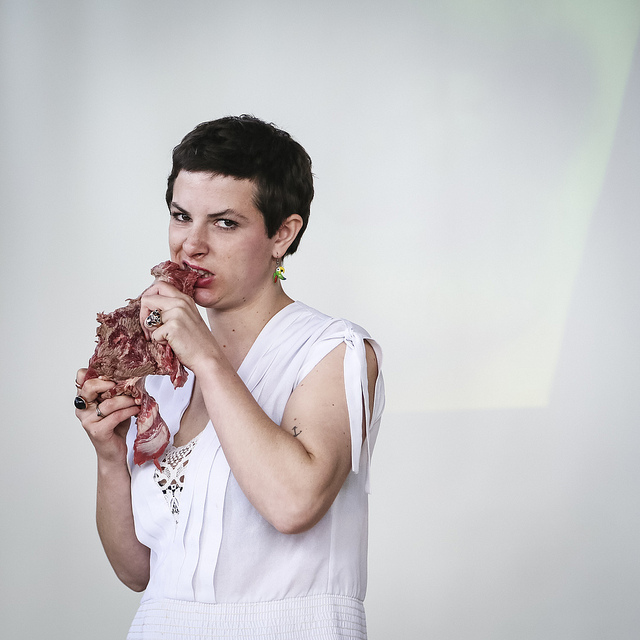
J’ai découvert le documentaire « Did cooking make us human » (BBC). Il décrit une théorie scientifique qui explique que l’espèce humaine a commencé à se développer en commençant à manger de la viande, et ensuite à cuisiner. Parmi la communauté scientifique, il est communément accepté que l’introduction de la viande dans le régime alimentaire de nos ancêtres a permit l’évolution de leur intelligence et causé une augmentation de leur cerveau.
La performance For the love of Meat présentée durant For the Love of Food a été créée pour interroger le spectateur sur ses habitudes alimentaires.
Après avoir mangé des fruits à l’aide d’une pierre, je me levais, prenais un steak dans le frigo et le mangeais à mains nues. Alors que je déchiquetais la viande avec mes dents, mastiquant, je regardais chaque personne dans l’auditoire, l’une après l’autre. Le contact visuel était renforcé par le pouvoir sauvage de mon action, de manger de la viande crue à mains nues. Dans ces yeux, je vis un mélange d’émotions, fascination, dégoût pour certains, attraction et presque tension érotique pour d’autres.
Le fait de manger de la viande nous rappelle la façon dont nos ancêtre mangeaient: chasseurs, mangeurs de viande.
Cependant, durant l’action, manger de la viande me paraissait extrême, presque subversif. Après la performance, certaines personnes ont dit avoir eu peur pour moi, ressenti de la pitié de m’infliger une tâche pareille et m’ont demandé si je me sentais mal.
Comment est ce que le fait de manger de la viande est-t-il devenu une action subversive qui font se sentir les personnes malades ou coupables?
En France, où la gastronomie fait partie de la vie de tous les jours, manger est une célébration. Quand j’étais petite, c’était toujours poulet le mercredi, poisson le vendredi et rôti le dimanche. Noël est un banquet fait pour les amateurs de viande et de fruits de mer, avec des huîtres, du saumon fumé, du homard ou du foie gras, le péché ultime, en entrée, suivi d’un plat principal souvent constitué de pintade, gibiers, canard ou autre. Ensuite, vient le fantasmagorique plateau de fromage qui nous a rendu si connus. Lorsque l’on va au restaurant, on doit choisir entre un poisson et une viande et seulement ensuite l’accompagnement. Mon plat préféré est une omelette avec du gruyère rapé, de la crème, des lardons…
Suis-je un monstre aux yeux de ceux qui ont choisi la voie vegan? Suis-je l’ennemi? Suis-je la cible à convertir?
Il y a tant de façons de manger, de cuisiner, de vivre. Je suis une mangeuse de viande. Je respecte le choix des autres, mais je ne pense pas que je deviendrai un jour végétarienne, encore moins vegan. Si un jour, on ne peut plus acheter de produits animaux pour des raisons éthiques, écologiques ou économiques, j’éleverai sûrement des poulets dans mon jardin avec une vache pour le lait! Peut-être même que je commencerai un marché noir, et vendrai des oeufs sous le comptoir. Les gens me paieront cher pour compenser le risque que je prendrai.
En attendant, je supporterai toujours le regard réprobateur de mes amis végétariens lorsque je sors dîner avec eux et que je choisis l’option avec viande.
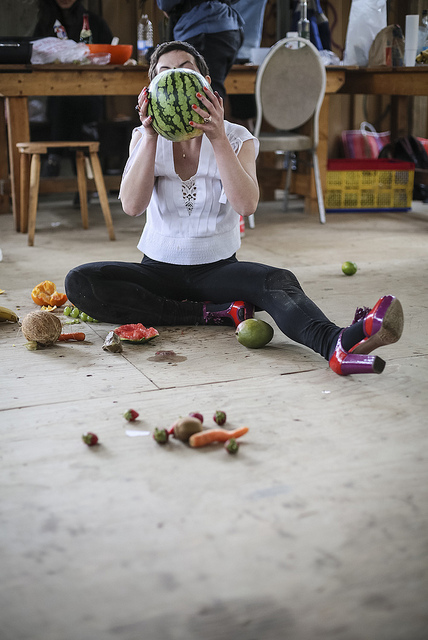

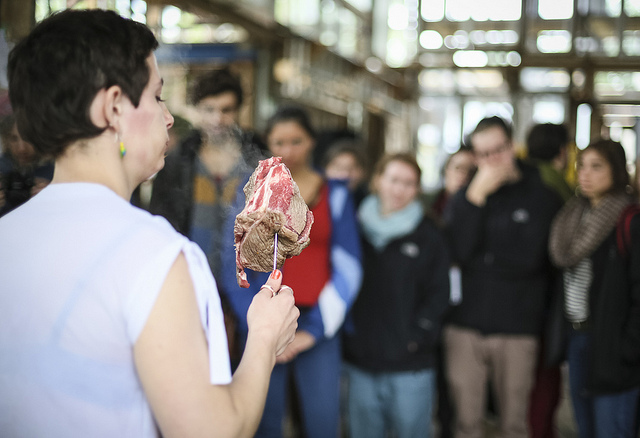
I came upon the BBC documentary called « Did cooking make us human ». It is about a scientific theory that says the human species began to evolve when they began eating meat, and then, began cooking.
Among the scientific community, it is accepted that the introduction of meat in our ancestor’s diet increased their intelligence and caused their brains to grow.
Indeed, meat has a more concentrated form of energy that allowed our ancestors to spend less time looking for food. This energy was used by their body to evolve by an augmentation of their brain size and therefor, their intelligence.
The performance « For the love of Meat » during For the Love of Food was made to interrogate the viewer about diet habits.
After eating fruits using a stone, I stood up, fetched a steak in the fridge and ate it with my bare hands. As I teared the meat apart with my teeth, masticating, I watched, one after the other, each person in the crowd for a few seconds. Those eye contact were reinforced by the power of the savage act of eating raw meat with my hands. In those eyes, I saw a mixed feeling of fascination, disgust for some and attraction or even erotic tension for others.
The act of eating meat is a reminder of our common ancestors’ way of eating: hunters, meat eaters.
However, eating meat felt like doing something extreme, almost subversive.
After it, most people said they were afraid for me, pitied me for inflicting myself such a task and asked if I felt sick.
How did eating meat became a subversive action that make people feel sick and guilty?
In France, where the gastronomy is part of everyday life, eating meat is a celebration. When I was a kid, it was always chicken on wednesdays, fish on fridays, and a roastbeef on sundays. Christmas is a feast for meat and seafood eaters, with oysters, smoked salmon, lobster for starters, foie gras, the utmost sin, followed by a main dish, often goose, wild boar, duck, deer, or other game. Then, the most fantasied cheese platter than make us french so famous.
When you go in restaurant, you choose your meat or fish and then the side dish.
One of my favorite meal is a basic omelet with raped cheese, cream and « lardons », small smoked pork sticks…
Am I a monster to those who pledge their life to veganism? Am I the enemy? Am I to be converted?
There is so many ways to eat, to cook, to live. I am a meat eater. I respect other people’s choice, but I don’t think I’ll ever go vegetarian, let alone vegan. If one day, we cannot buy animal products anymore in markets for ethical, economical or ecological reasons, I’ll raise my chickens in my yard and get a cow for milk.
Maybe I’ll start a black market, and people will come to my house to buy eggs under the counter. They will have to pay me a lot for the risk I am taking.
In the meantime, I will still get that judging look from my vegetarian friends whenever I go out eating with them and take the meat option.
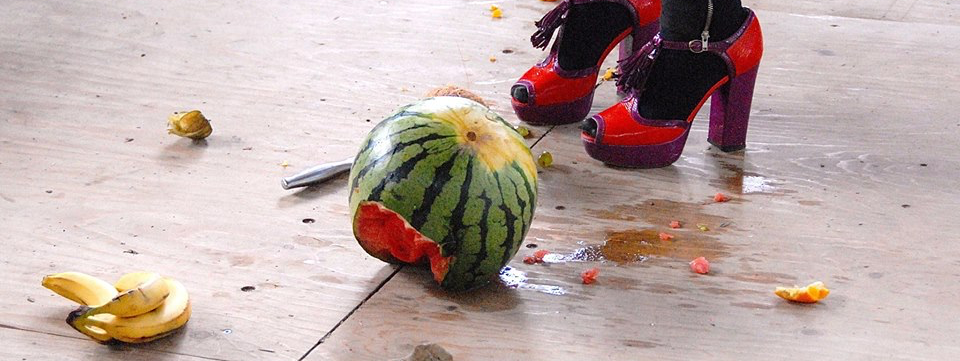
Images: Aleks Slota
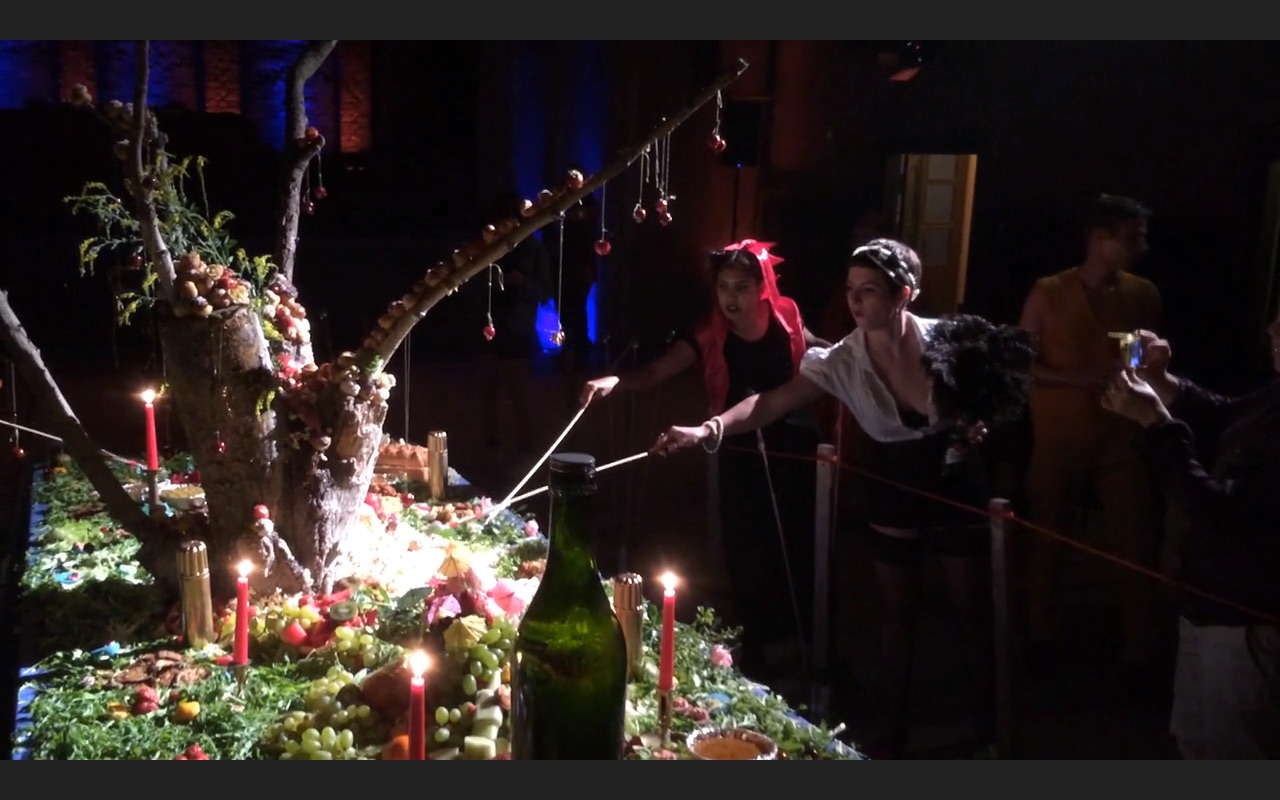 Créé pour la Soirée de Clôture de MPA-B 2014, « Das Ende », cette installation culinaire appelé « The Last Supper » recréait un paysage représentant la profusion d’un buffet paradisiaque.
Créé pour la Soirée de Clôture de MPA-B 2014, « Das Ende », cette installation culinaire appelé « The Last Supper » recréait un paysage représentant la profusion d’un buffet paradisiaque.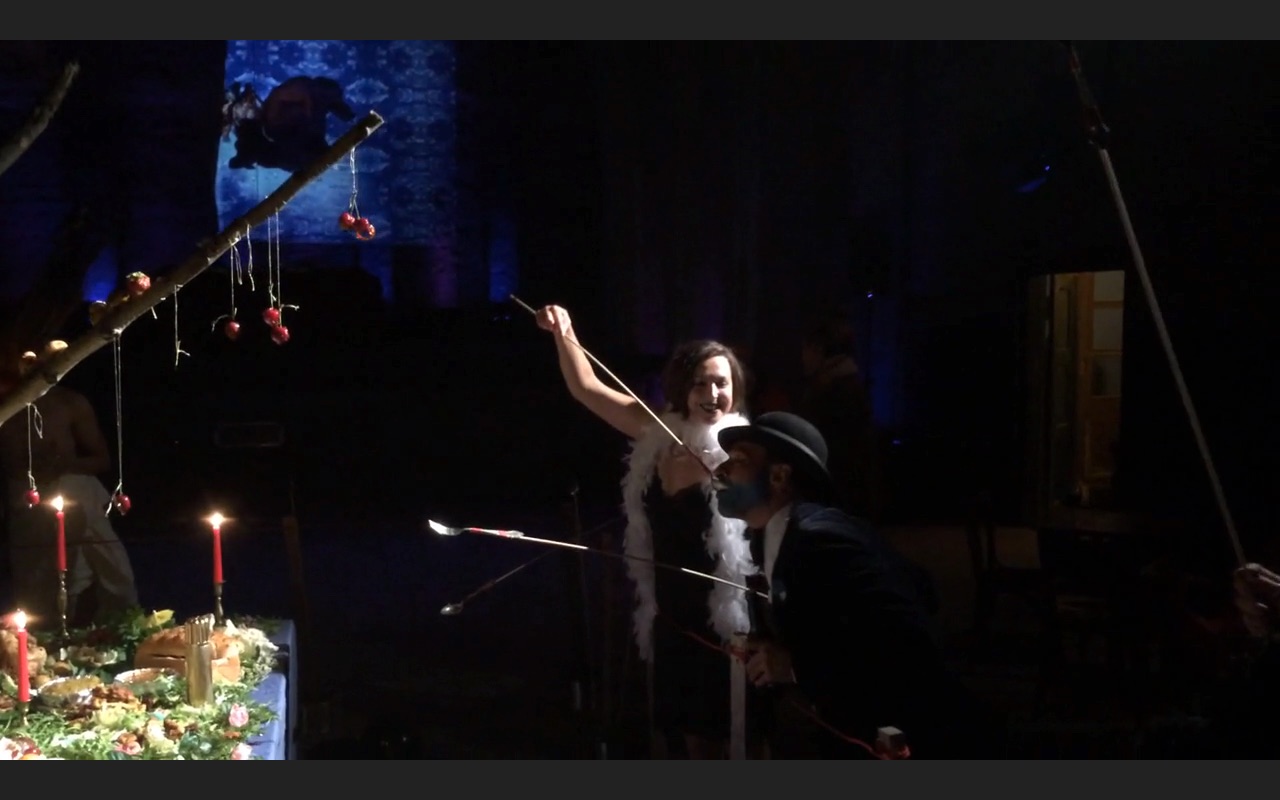 Created for the Closing Party of MPA-B 2014, DAS ENDE, this food installation called The Last Supper aimed to create a landscape representing the profusion of paradise’s buffets.
Created for the Closing Party of MPA-B 2014, DAS ENDE, this food installation called The Last Supper aimed to create a landscape representing the profusion of paradise’s buffets. 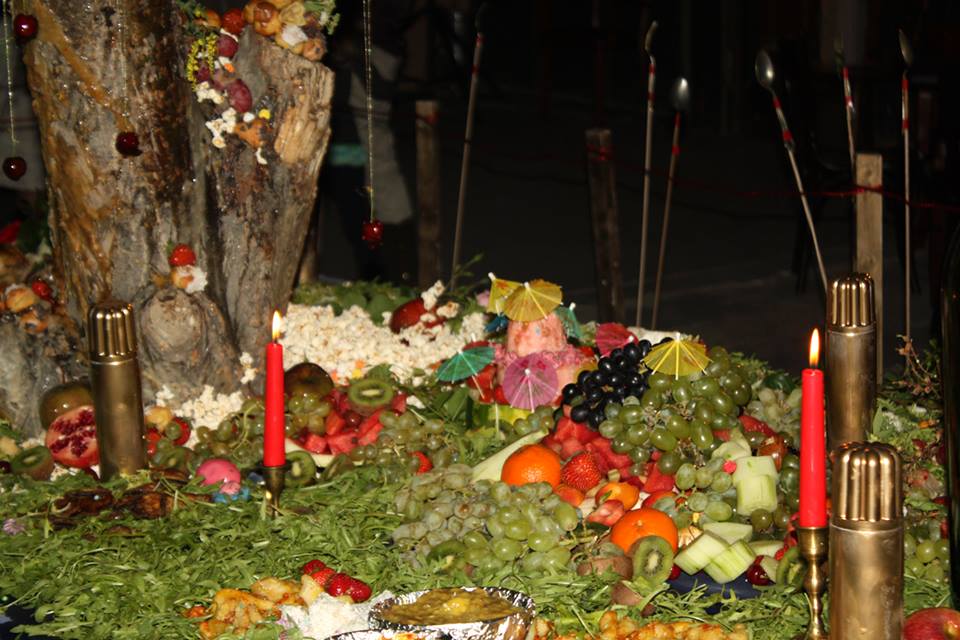

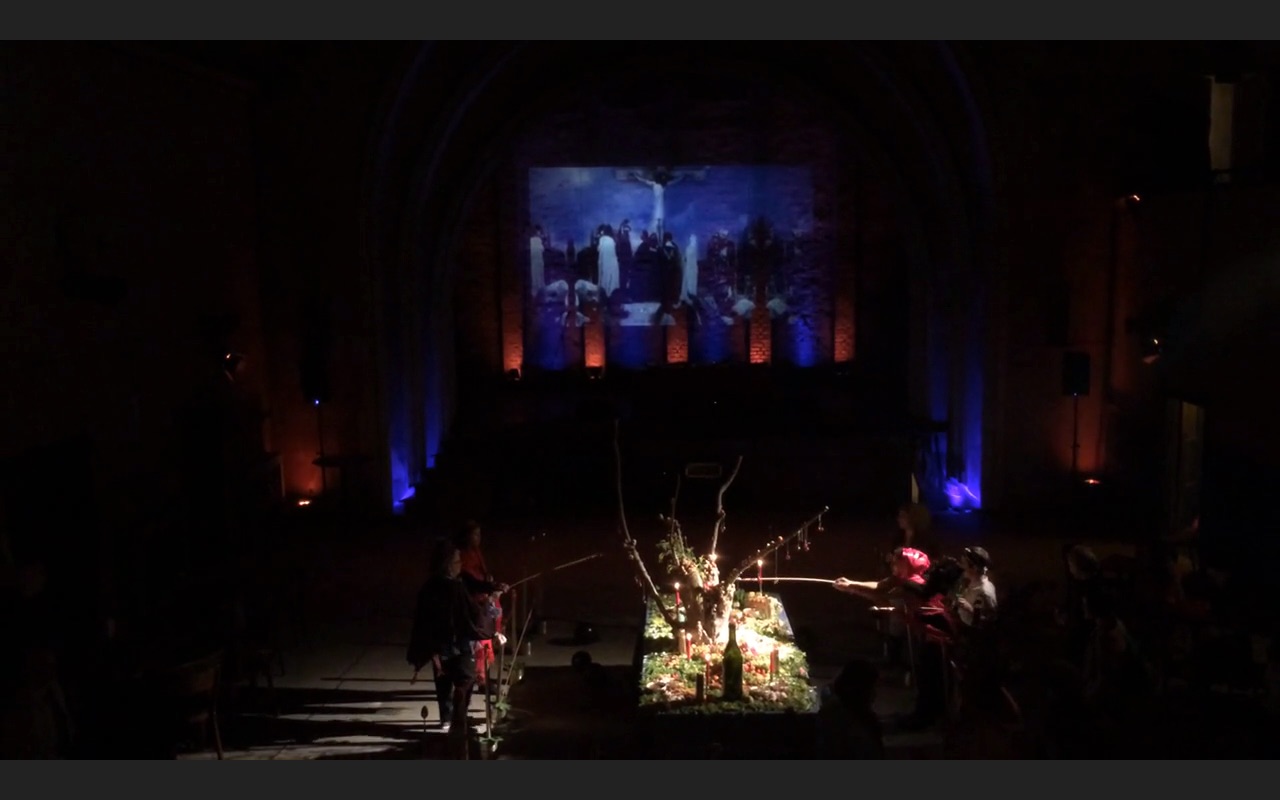




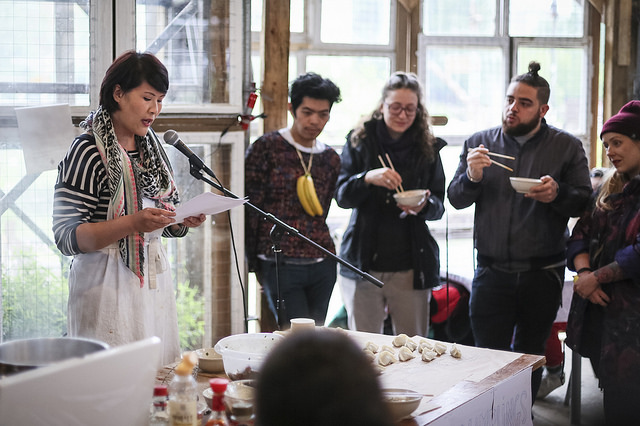
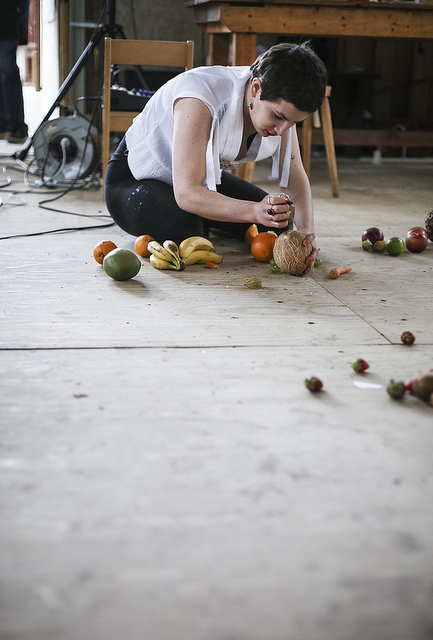
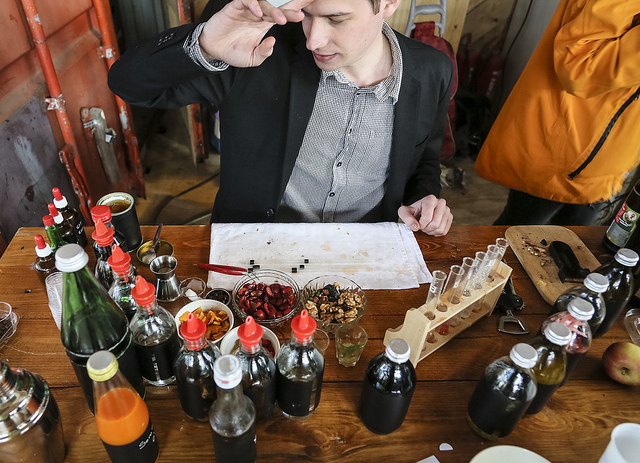
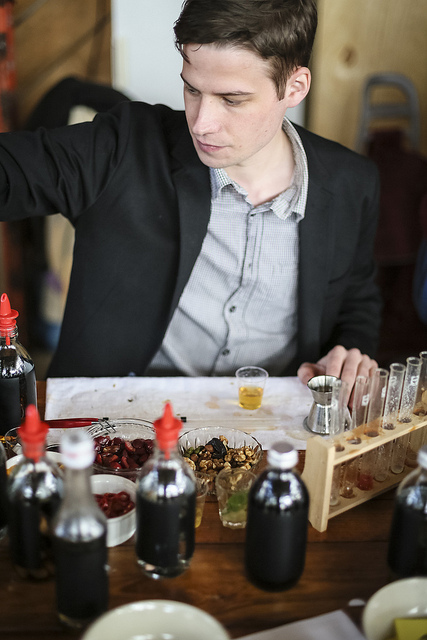
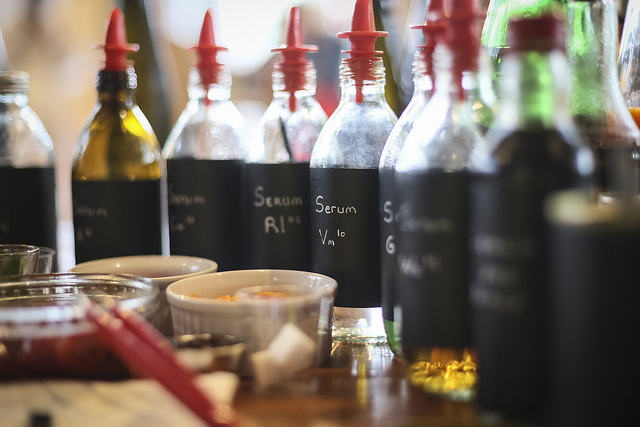

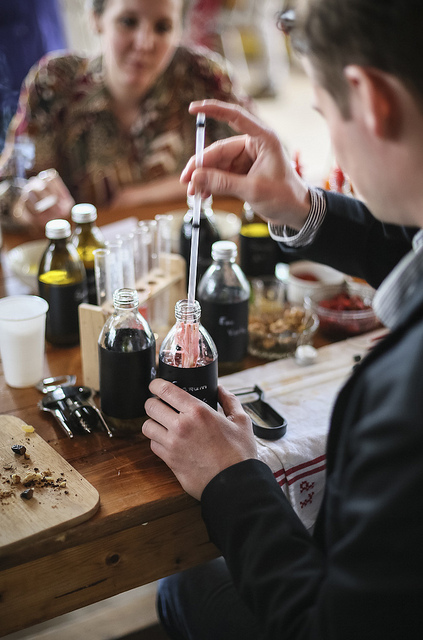
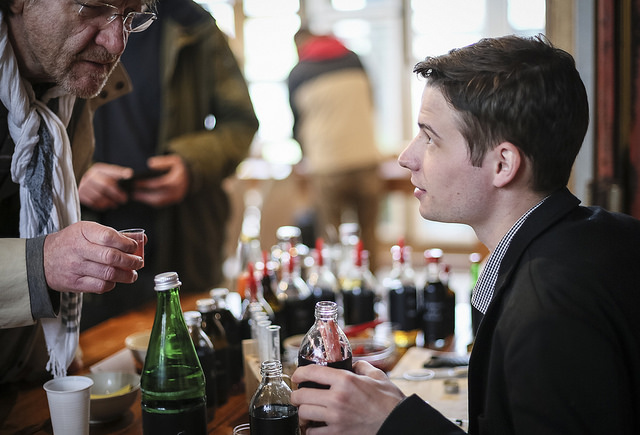
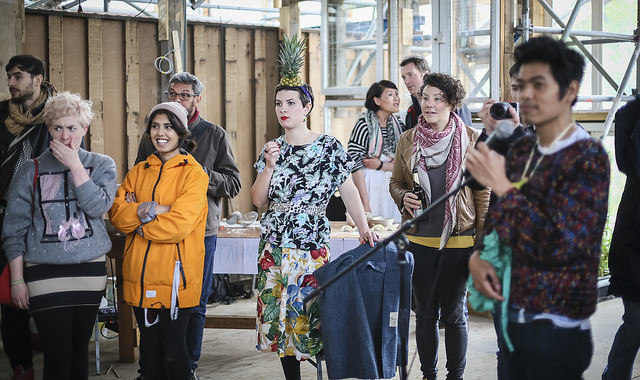
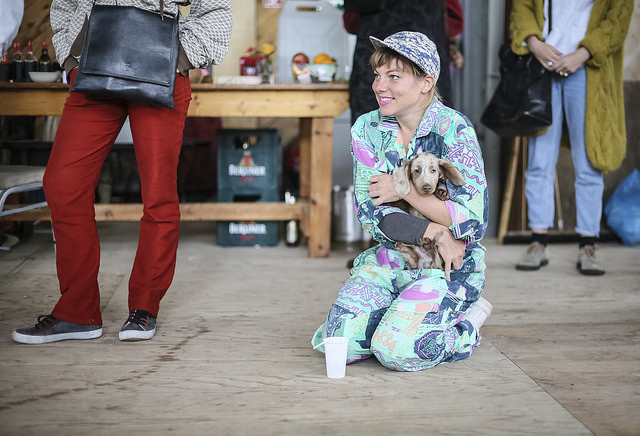
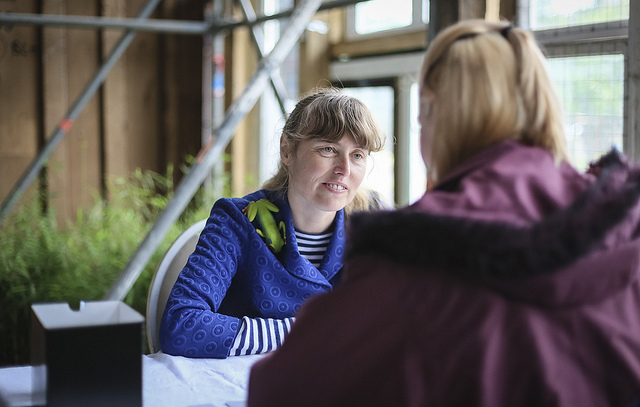
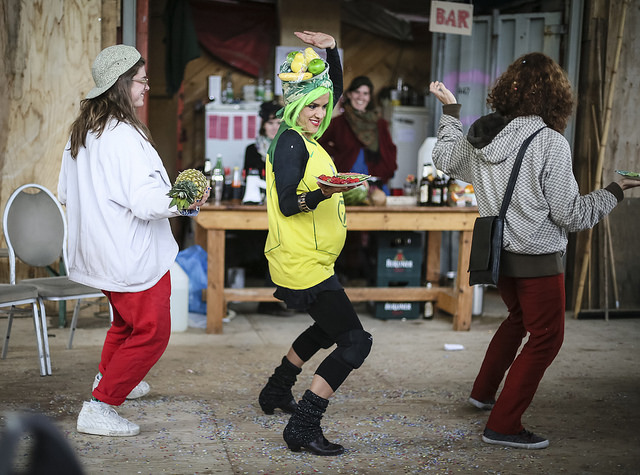

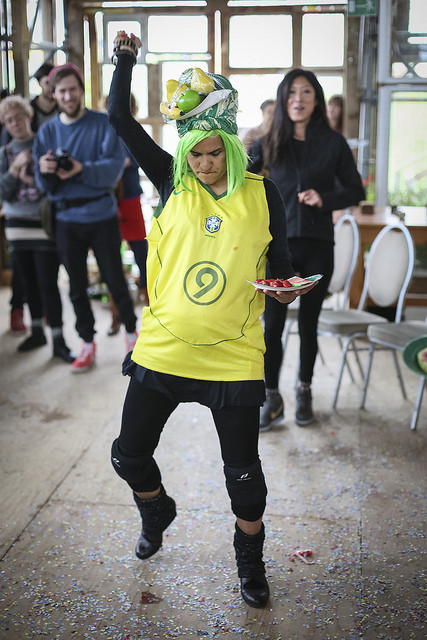
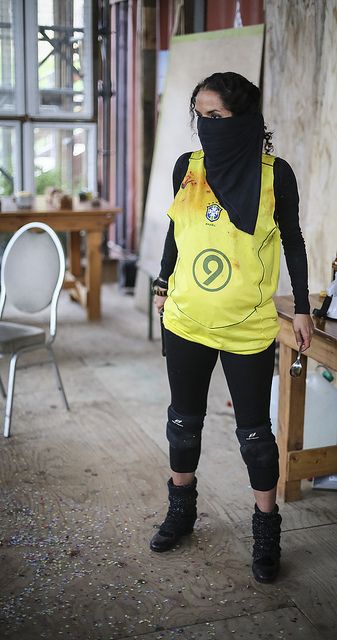

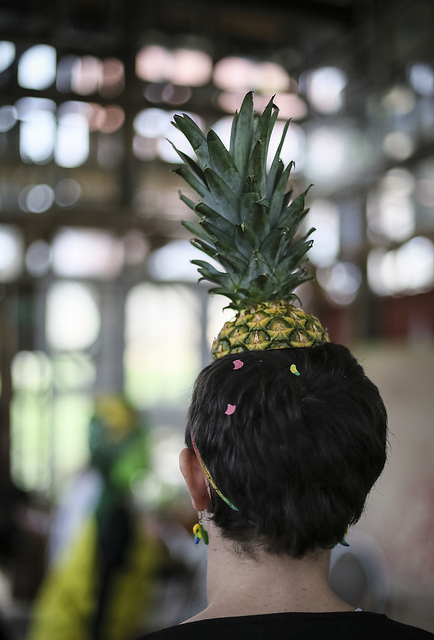
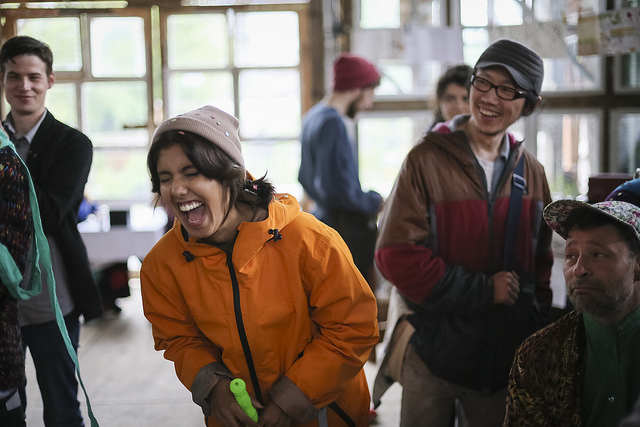

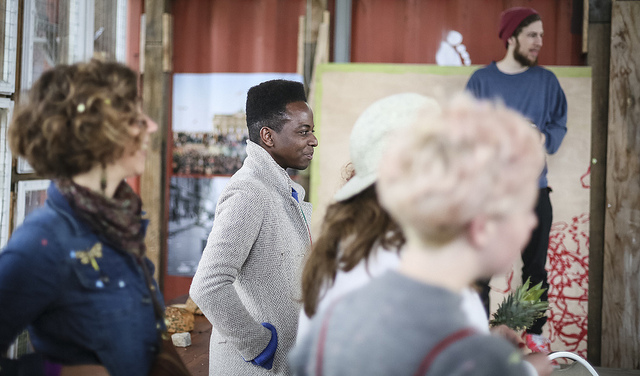
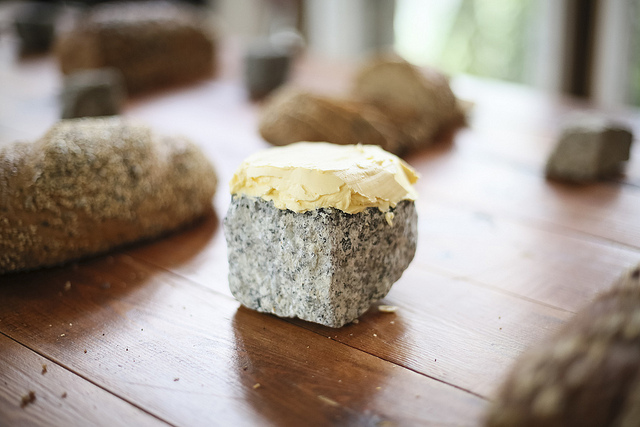

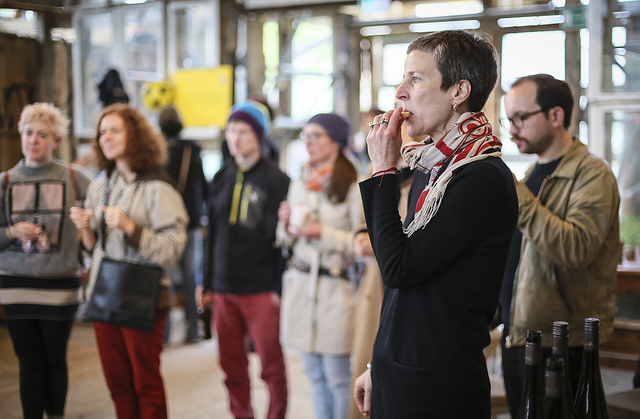 Merci à Aleks Slota pour les supers images! Thanks to Aleks Slota for the great images!
Merci à Aleks Slota pour les supers images! Thanks to Aleks Slota for the great images!